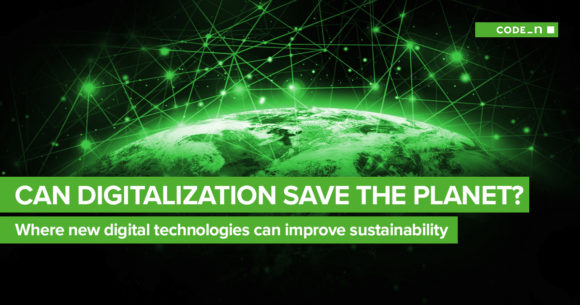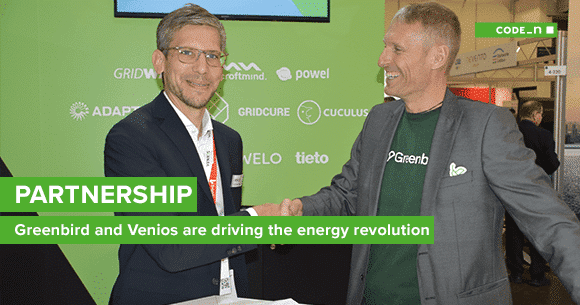Can we save the planet through digitalization? Where new digital technologies can improve sustainability
Most of the time, digitalization is the solution to everything, isn’t it? So why shouldn’t it be a solution to the world’s energy problem? But how can digitized processes help to save the planet? Their biggest advantage is helping to a significant reduction in CO2 emissions, while they minimize the need for some resources (i.e. paper) in manufacturing as well as in logistics. The digital transformation of industries can help to avoid an estimated 26 billion metric tons of net CO2 emissions and this only from three industries: electricity, logistics and automotive. So it’s high time we went for it! Since every increase by 1 percent of the global gross domestic product, the world’s carbon emissions rise by an estimated 0.5 percent.

Digital innovations should therefore be taken on account and used against this trend. Because, applied in the right way, digital technology can save lots of energy, even if it sometimes consumes much. Based on some examples, we show you here how easy can it be for a company to save energy and thereby to make the world a whole lot better.
Improve sustainability with smart homes
Smart homes are gaining more and more importance nowadays – with good reason. A perfect reason why is you being able to save energy, for example by controlling the thermostat. You can easily control a smart thermostat by using only your smartphone’s location. It automatically adapts your heating to where you are, reduces the temperature when you leave and heats before you arrive – easy and comfortable. For a company this is a tiny action, but it has a huge positive impact on our environment! Stefanie Sedlak, Head of PR & Communication of Tado, “Contrary to popular opinion, you don’t have to sacrifice comfort to save on energy and heating costs. The tado° Smart Thermostat automatically adapts to your habits and preferences to increase comfort, whilst ensuring that not a penny is wasted heating an empty home.” If you want to know more about the smart thermostat, you can look up Tado, one of our Alumni.
Improve sustainability in supply chains
In order to obtain a more sustainable supply chain, you need to figure out critical issues across your whole supply chain. Organizations like TSC or WWF, i.e., help companies to identify their very own most critical sustainability issue. Once the crucial problems in the supply chain have been detected, teamwork does the trick! Since those critical supply chain issues in your company may overlap with the individual supply chain steps of other companies, you can join forces. This way, resources such as palm oil, paper, etc. can be used more responsibly. Another effective way to control sustainability performance is the application of our Alumnus EcoChain. It enables to assess the whole sustainability performance throughout the supply chain, considering not only carbon levels but the complete 24 environmental factors of the ecological footprint. So not only you can find where the exact critical issue in your supply chain lays, but the app also gives you some advice on how to improve it! Boudewijn Mos, Co-founder / Commercial Director of EcoChain: “We believe that businesses, driven by technological progress, have the power to create a sustainable world. A world of abundance rather than scarcity, supporting future generations. This requires fundamental redesign of businesses, value chains and the economy as a whole. Change is therefore the new paradigm. Sustainable front-runners will be the dominant market players of tomorrow.” Find out more about the company and their founders here and also here.

Improve sustainability in production
Some of the big strengths of a smart factory are energy efficiency and the minimization of CO2 emissions during the production process. Thanks to smart simulation models, it’s possible to find ways of saving energy and reducing CO2 emissions already during design and manufacturing phases. For example, by introducing an intelligent Energy Management Data System (iEMDS), the BMW Group’s smart simulation was able to reduce energy consumption by 31 percent – and this only up to 2013! So, this is not only a motivation to save energy, but also to reduce your energy bill!
Digitalization offers great possibilities to improve sustainability – and maybe even to save the planet. You just have to give it a try!





Comments